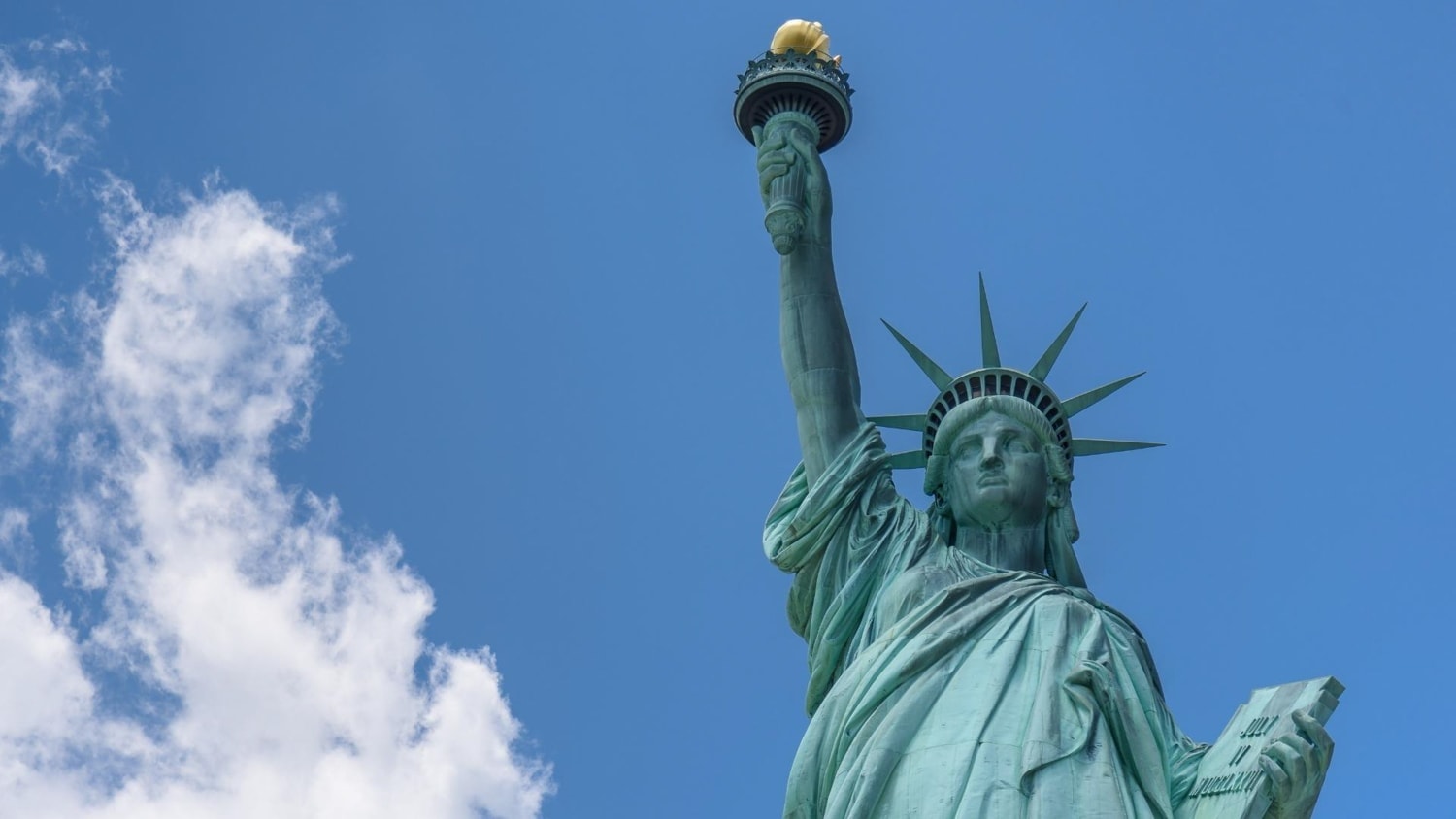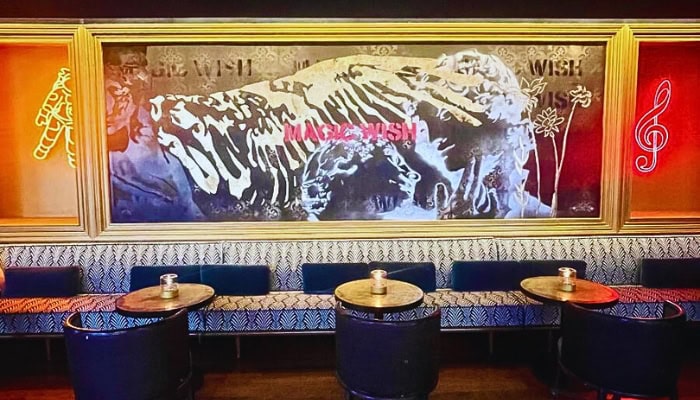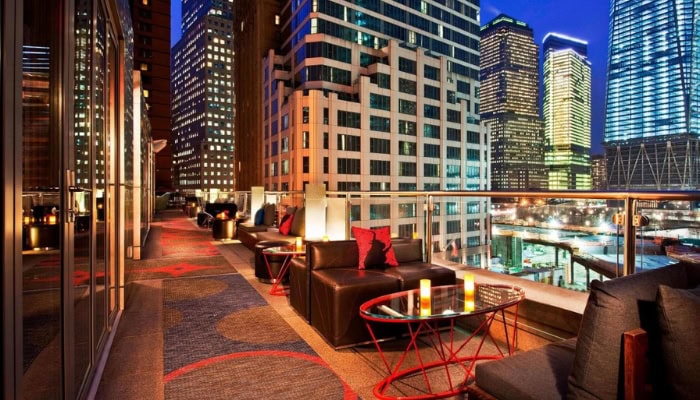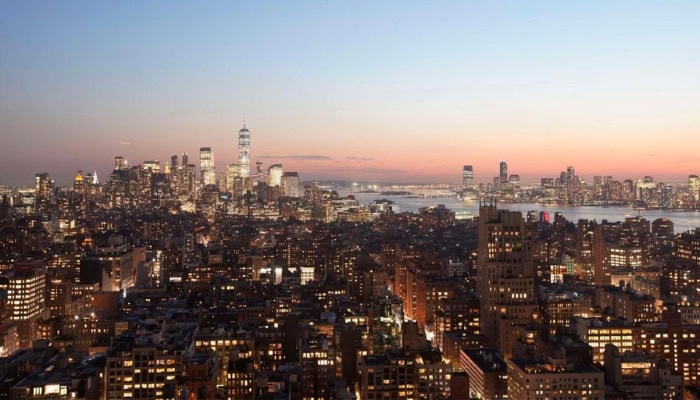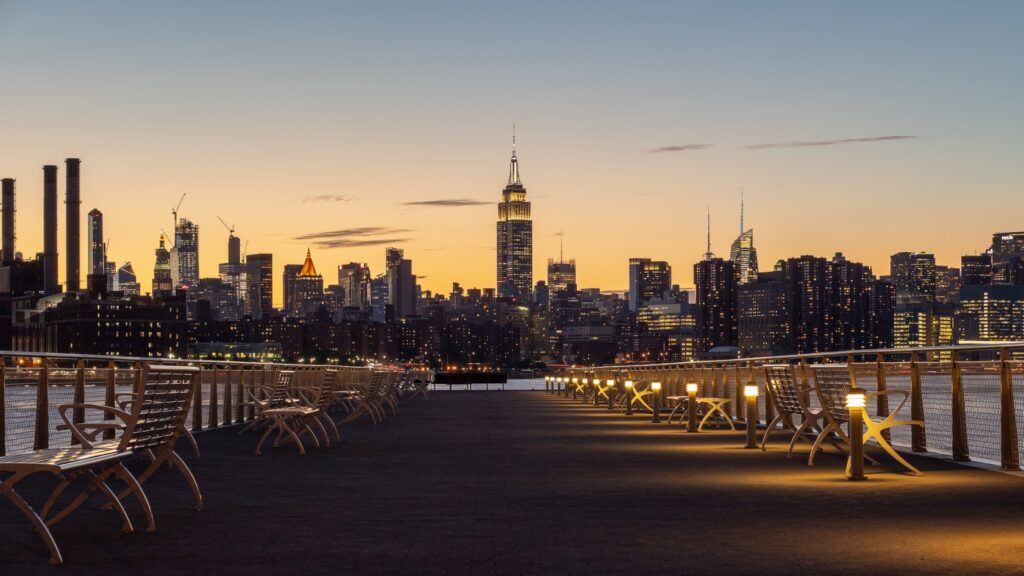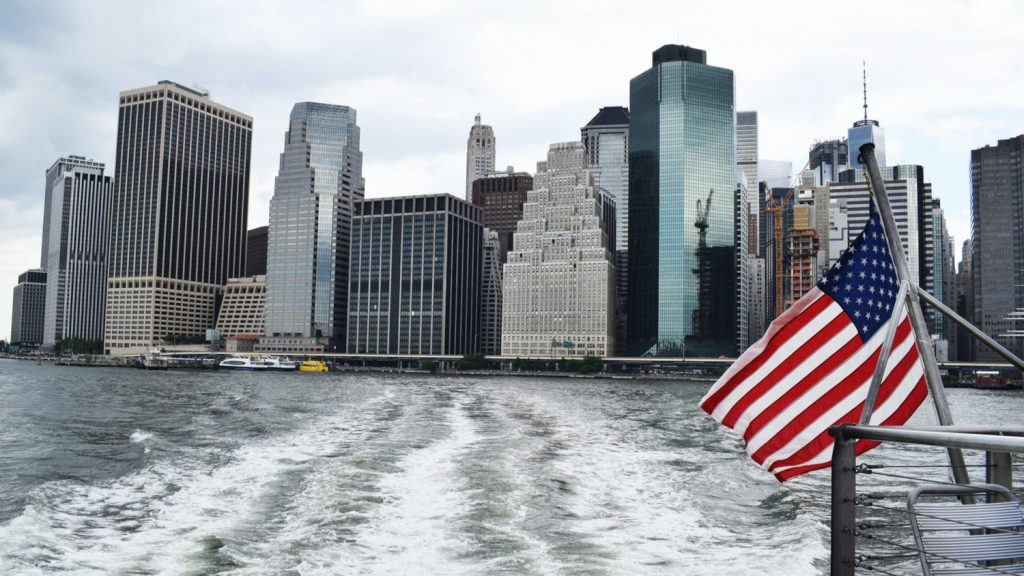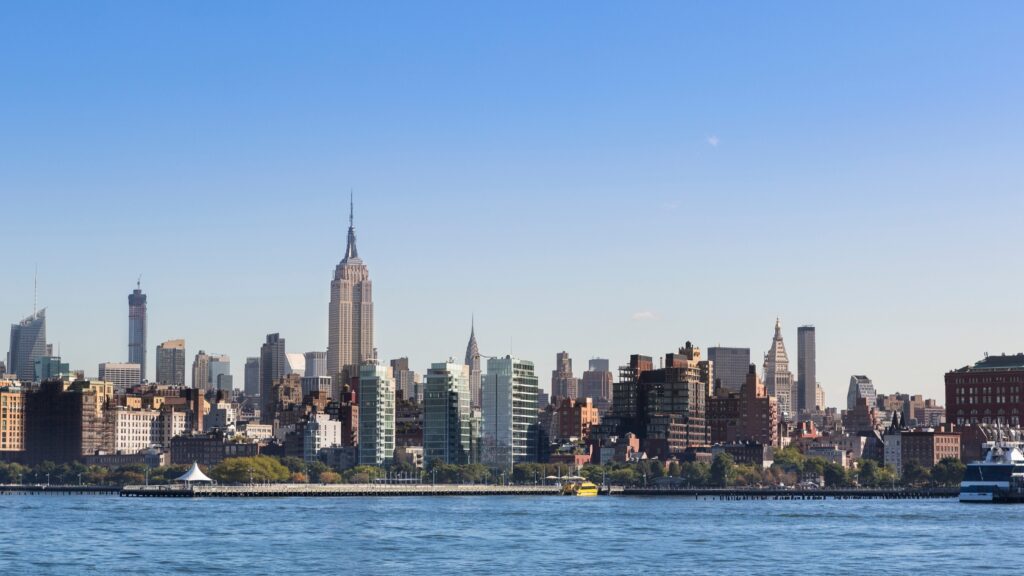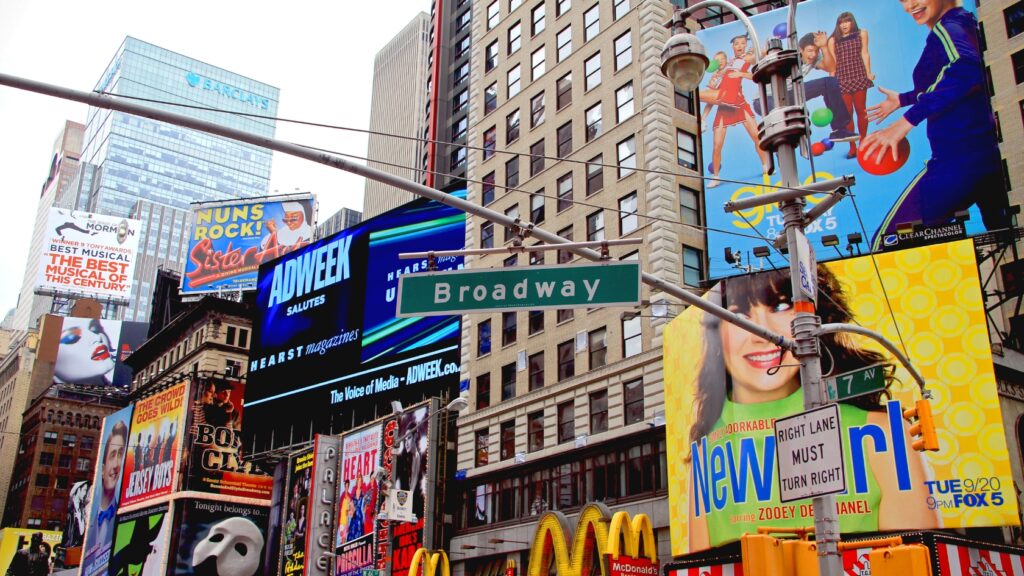A travel guide to New York, with useful information if you are travelling to New York without a travel agent and on your own – flights and airports, transport, accommodation, food, prices, safety and other useful tips.
- New York
- Where is New York?
- How many people does New York have?
- Map of New York
- How to get to New York?
- Airports in New York
- Public transport in New York
- When to visit New York?
- Where to stay in New York?
- What to see in New York?
- Where to eat in New York?
- Prices in New York
- Is New York safe?
- Useful tips before visiting New York
- Learn more about New York
New York
You won’t find another city like New York in the world. The Big Apple. The city that never sleeps. An energetic and hectic place that is constantly undergoing turbulent change. What’s cool today, no one will remember tomorrow.
You’ll never be bored in New York. It is a city that is ready for visitors 365 days a year. In the cold and gloomy winter and the humid and warm summer, there are so many activities to choose from that you won’t even need a few visits.
Did you know that New York was originally called New Amsterdam when it was settled by Dutch settlers in 1624? But 40 years later it was taken over by the English, who renamed the town after the Duke of York.
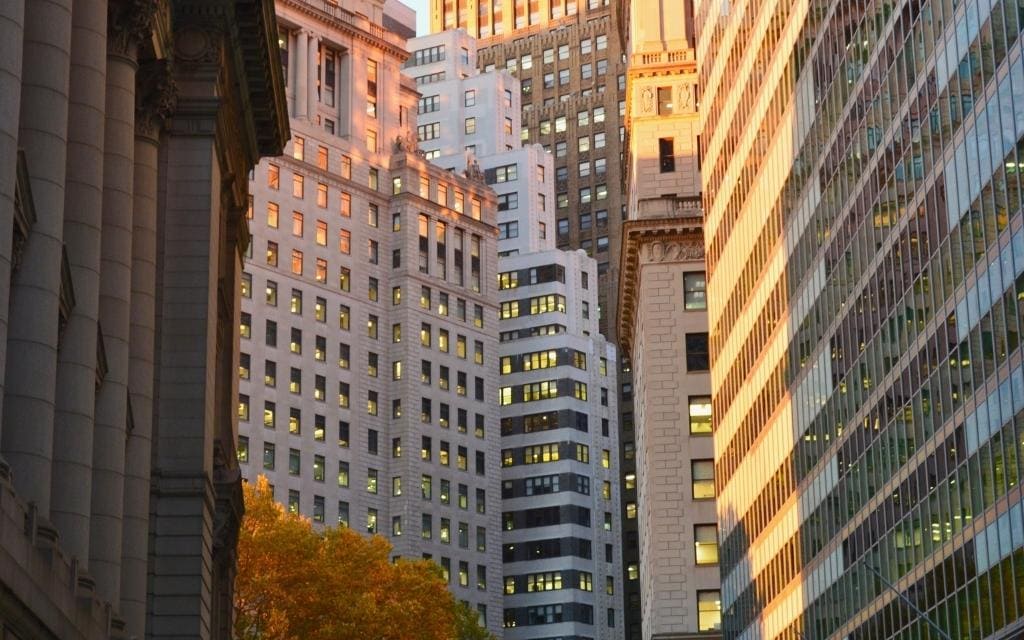
Where is New York?
New York City is located on the east coast of the United States at the mouth of the Hudson River. It is located in the southern tip of New York State. For Europeans, it is the most accessible big city in America.
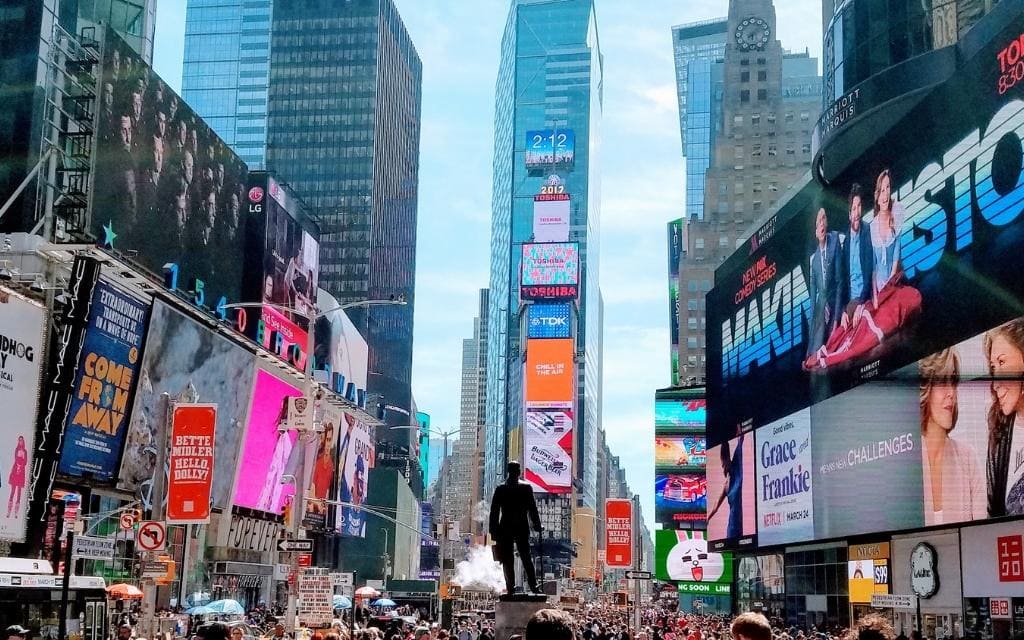
How many people does New York have?
New York City has 8.5 million residents in 5 boroughs – Manhattan, Brooklyn, Queens, the Bronx and Staten Island. One in 38 Americans lives in New York City.
The largest city in North America since 1790, Albany is the capital of New York State with only 100,000 residents.
New York City has a cosmopolitan atmosphere thanks to the large number of immigrants. More than 800 languages are spoken here, making it the most linguistically diverse city in the world.
Map of New York
On the map below you will find marked the best places to visit in New York:
HOW TO USE THIS MAP: Above you will find a detailed map of New York City. Click at the top left of the map to see separate layers with highlighted locations. You can hide and show the different layers or click on the icons on the map to see the names of the places I mention in the New York guide. If you want to save the map, star it. For a larger version, click on the icon in the upper right corner.
How to get to New York?
New York is well connected by direct flights to most major cities in Europe and around the world. You can get good deals on flights from Berlin, Munich, London, Milan or Oslo.
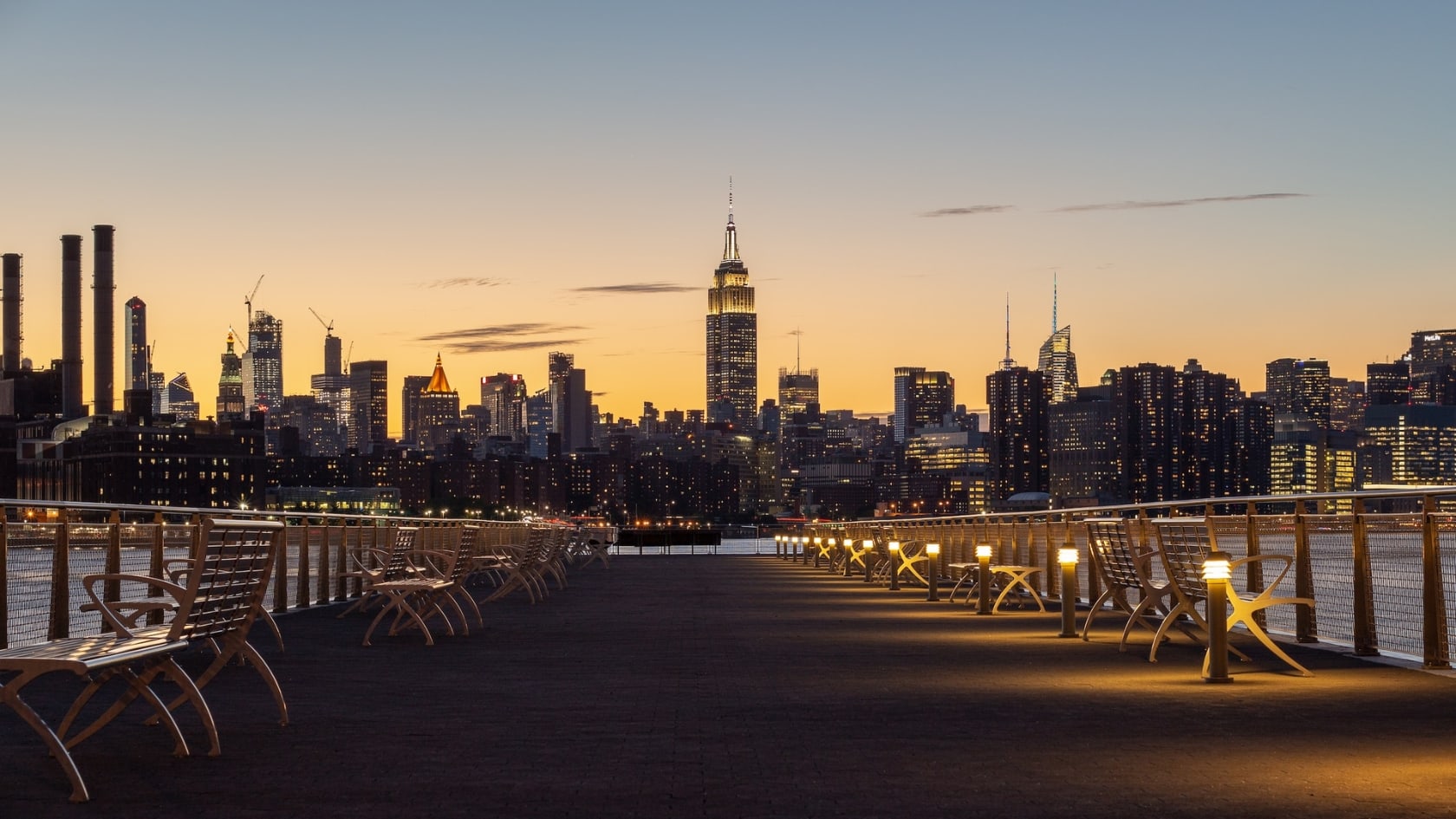
Airports in New York
There are 3 airports in the New York area:
- John F. Kennedy Airport (JFK)
- Newark Liberty Airport (EWR)
- LaGuardia Airport (LGA)
For flights from Europe, the first 2 airports of interest are JFK and EWR. LaGuardia Airport is mainly used for domestic flights and flights to Canada.
How do I get from John F. Kennedy Airport (JFK) to New York?
JFK Airport is the furthest from downtown New York. It lies southeast of Queens. There are several options for getting to Manhattan, from express buses to taxis. Today we’ll take a look at the most commonly used options using AirTrain.
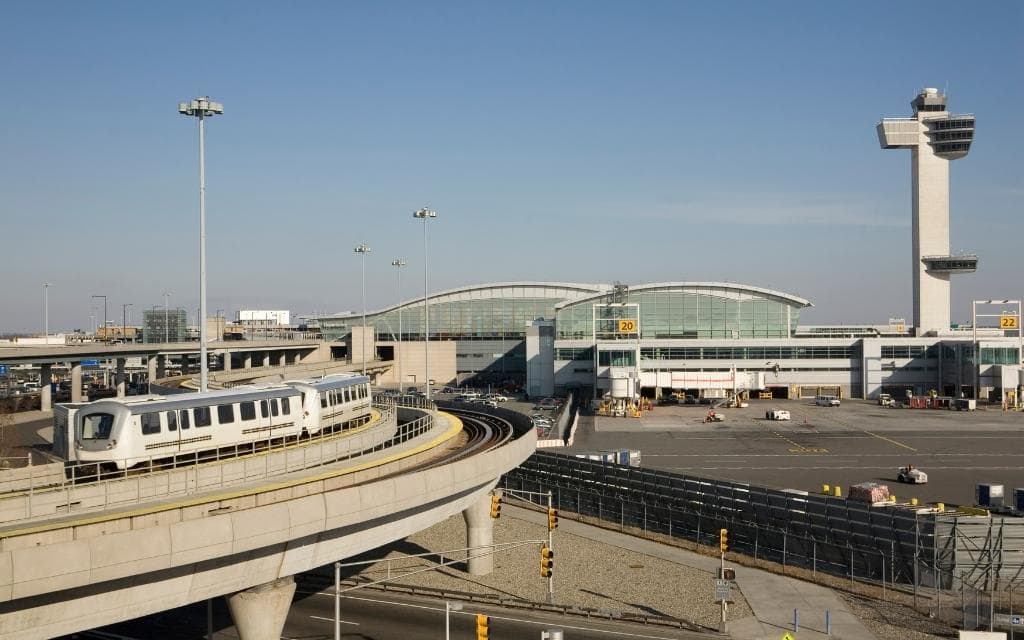
AirTrain is a special train that serves the entire JFK airport free of charge. But in addition, they will also take you for $8.50 to the nearest Jamaica Station or Howard Beach, where you can take the subway into the city. You can pay with a contactless card.
Summary: You can travel free on AirTrain trains around the airport and off-airport to Jamaica Station or Howard Beach for $8.50 each way.
You choose your station depending on where you are travelling to or where you are staying. From the station, you can take the metro or the LIRR suburban railways. Now we will discuss both options and show what are the advantages of metro and then what are the advantages of LIRR.
JFK Airport – AirTrain – Subway – Downtown New York
The first option is the metro, which is cheaper, but you’ll spend a bit more time on the journey. At the same time, it is not as comfortable as the LIRR commuter rail.
Take the subway at one of the two AirTrain stations from the airport – Jamaica Station or Howard Beach.
- Jamaica Station is served by 3 subway lines:
- E Line for Queens and Midtown Manhattan
- J or Z line (Z line is express during peak hours) for Brooklyn and Lower Manhattan
2. Howard Beach is served by the A line to Brooklyn and Lower Manhattan.
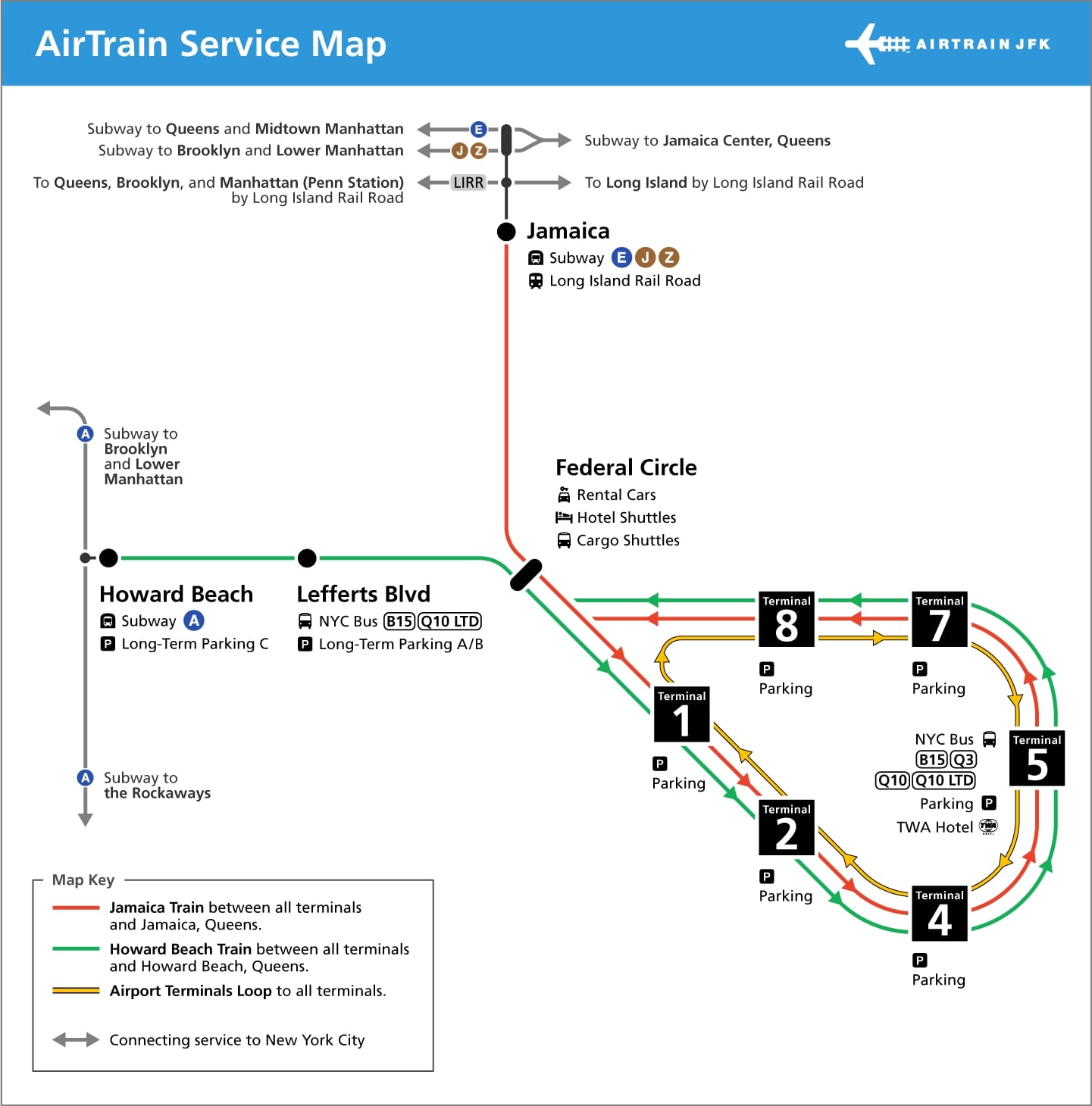
You get off at one of the stations, where you buy a MetroCard for $1 from a machine (you can also buy one at the airport). Or you don’t have to buy a MetroCard and use your contactless card (just swipe it on the OMNY reader to get the deduction).
A metro ticket will set you back $2.90 (same price citywide for metro and buses). The journey to downtown New York City takes between 50 minutes and 1 hour 15 minutes depending on the destination. In total, it will cost you $11.40 to take the AirTrain and then the subway downtown.
Hotels in New York 😴
JFK Airport – AirTrain – LIRR – Downtown New York
The other way to get to downtown New York is by commuter rail. It is faster, but in some cases it can be more expensive.
At the airport you will board the AirTrain again. This time, however, you don’t choose a station and go straight to Jamaica Station, where the Long Island Railroad (LIRR for short) will take you downtown.
You can buy a ticket directly at the station in the ticket machine or at the ticket office, or at the ticket office. you can download the MTA eTix app and buy your ticket through the app. You then show your ticket (physical or on your mobile phone) to the conductor on the train.
The LIRR will take you to Penn Station in Midtown Manhattan or Grand Central. Fares from the airport to downtown total $13-$19 (AirTrain + LIRR) depending on whether you’re going during peak or off-peak hours. Count 30 minutes.
How do I get from Newark Liberty Airport (EWR) to New York?
Newark Liberty Airport (EWR) is located in New Jersey southwest of Manhattan. You have 2 basic options to get from the airport to downtown New York:
- Take the Newark Airport Express, a direct bus to Grand Central Station, the Port Authority Bus Terminal or Bryant Park just outside Times Square. The bus runs every 15-30 minutes between 4:00-1:00. The journey takes just over half an hour. Tickets are $18.70 for anyone 17+, $5.50 for children and $9.35 for seniors 62+. I recommend buying a return ticket straight away, as you will save significantly on the full price.
- The AirTrain will take you from the airport to the Newark Liberty International Airport train station, where you will board the NJ Transit train. That will take you all the way to Penn Station. The total price for a one-way ride is $16 (including AirTrain).
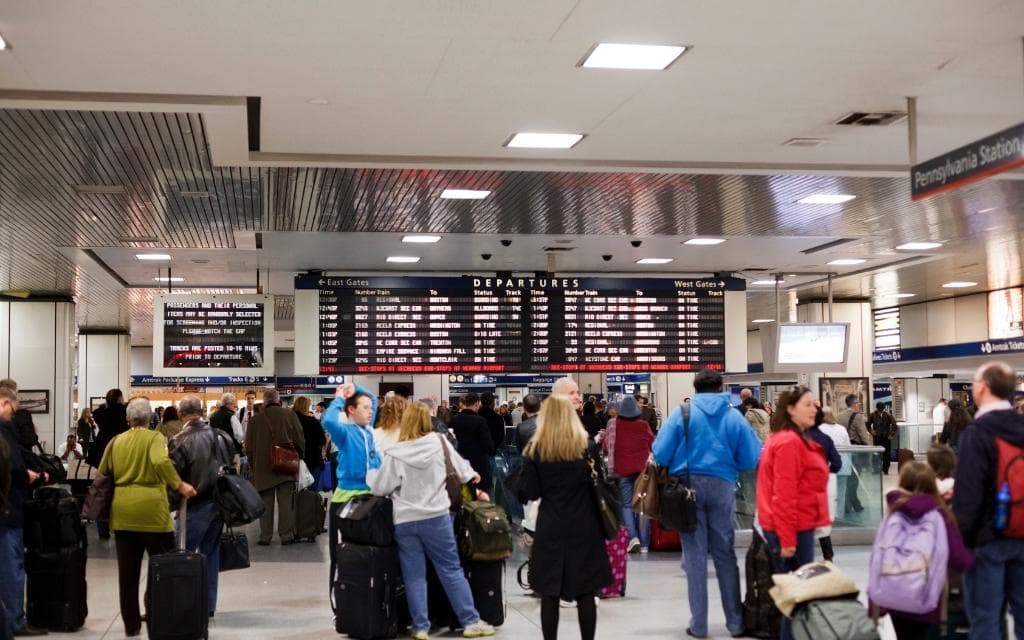
Public transport in New York
Subways and buses in New York
Transport in New York is relatively cheap (compared to London, for example) and will take you virtually anywhere, 24 hours a day.
Get a MetroCard for $1 from a vending machine, subway station ticket counter or newsstand. A subway or bus ride will set you back $2.90 instead of the usual $3.25. The other option is to buy a 7-day pass for $34, which gives you unlimited travel.
Another option is to pay with your contactless card, where you just put the card to the reader and the fare is deducted (the fare is the same as with the MetroCard). The most you can drive in a week is $34 (valid Monday through Sunday). Once you pass that amount, you ride for free for the rest of the week.
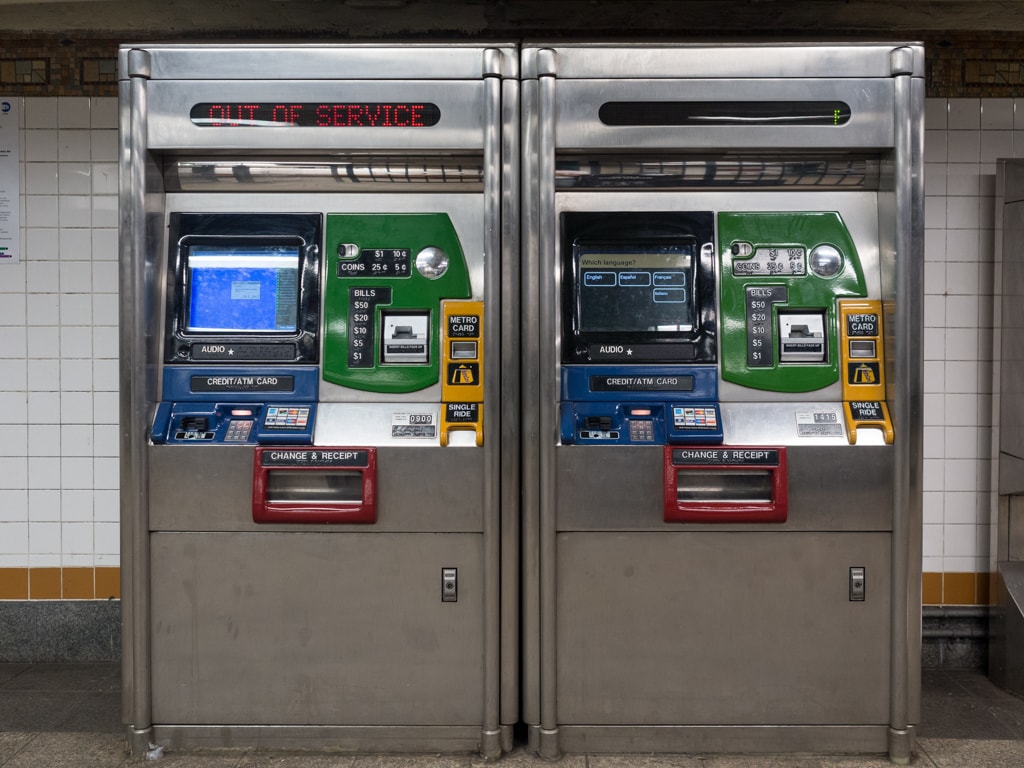
You can use your MetroCard and contactless card on the subway and on the bus and pay the same $2.90 each time. The ticket price includes a transfer between the metro and the bus (and vice versa) or between 2 different bus routes within a maximum of 2 hours.
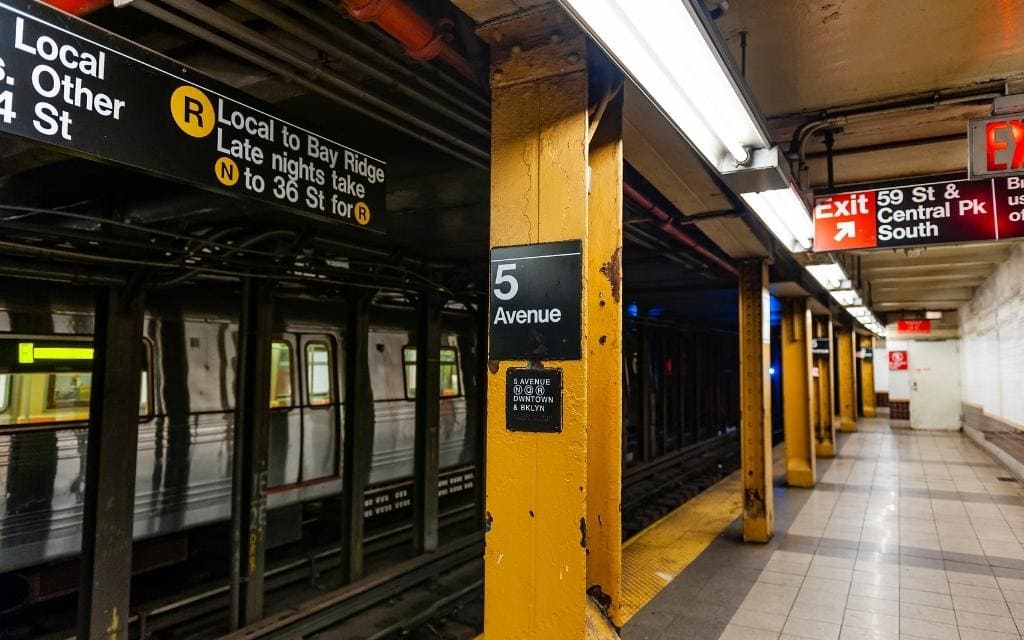
Metro lines are marked with numbers or letters. The metro is busiest between 7:00-9:00 and 17:00-19:00. There are even live performances at some metro stations.
The metro runs mostly from north to south (and vice versa). The west and east are well connected by buses, which are often not on time due to the heavy traffic in New York.
- New York City Subway Map download

Ferries in New York
If you want to see New York from a different angle, take the ferry at least once. It’s a great view of the city. You can choose from 3 ferries:
- Staten Island Ferry connecting Lower Manhattan and Staten Island. It is completely free and sails every 15-30 minutes;
- New York Waterways between Manhattan and New Jersey;
- NYC Ferry, which connects Manhattan, Brooklyn, Queens and the Bronx via the East River and New York Harber. The fare is $4 with a free transfer within 90 minutes.
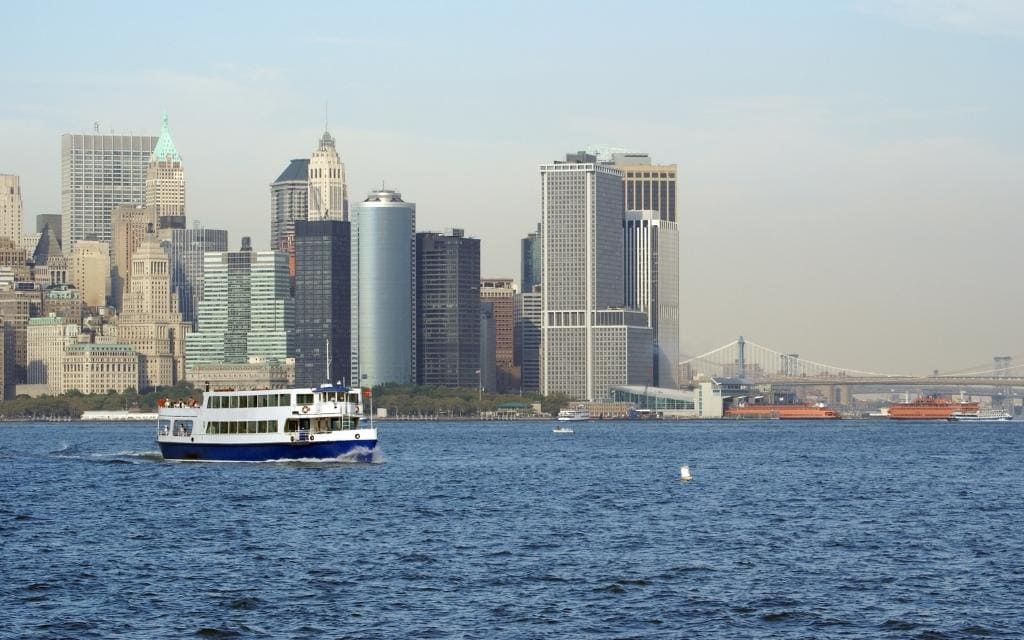
When to visit New York?
It depends on what you plan to experience in New York. In November and December there is a magical Christmas atmosphere. Especially at Rockefeller Center, where you can skate by the huge Christmas tree every year.
If you want to save money on your visit, take a trip to New York in the winter months of January-March. Accommodation and air tickets are the cheapest and there are also the fewest tourists.
The most pleasant weather for a visit is the period April-June and mid-September-October. The weather is warm and sunny. Summers here are hot and humid, but there are plenty of events.
Where to stay in New York?
Accommodation is expensive in New York. The best neighborhoods in general are Chelsea and the West Village. Both have great atmosphere and food. In addition, the West Village has a pleasant suburban feel.
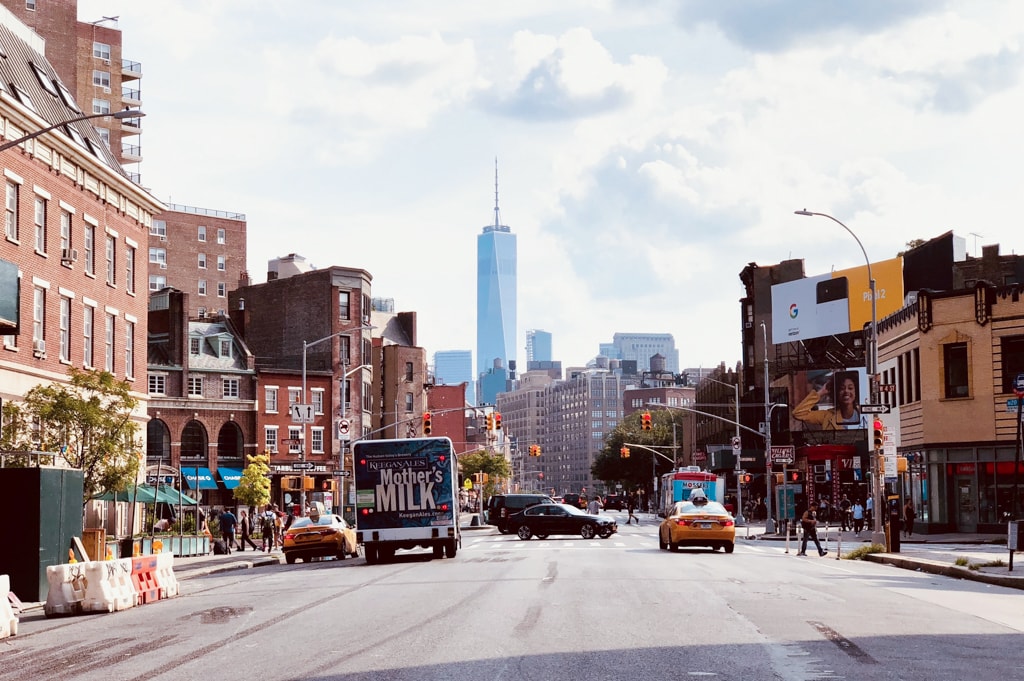
Cheaper neighborhoods that are well connected to downtown include Astoria in Queens and Williamsburg in Brooklyn, both east of Manhattan. In Manhattan, prices are higher, but on the other hand, everything is close at hand.
One of the more affordable neighbourhoods here is the Lower East Side. For families, the Upper West Side is ideal because it’s a short walk from Central Park, has playgrounds and is quieter.
Rooms are generally small in New York. I recommend looking ahead, as the best accommodation is broken down months in advance. Most hotels also offer free cancellation with a few clicks.
- OUR CHOICE: Hyatt Place NYC Chelsea: Fantastic hotel in downtown Manhattan, great views of Manhattan and subway 5 minutes away.
- Washington by LuxUrban: Four star hotel in Downtown, great views, great access to JFK airport.
- Hotel Under Times Square: Modern and design hotel 2 minutes from Times Square in the heart of Manhattan. Great access to the sights and the Port Authority bus station.
- LIC Hotel: Three-star hotel in Queens at a good price. Strategically located halfway between Manhattan and JFK Airport.
- West Side YMCA: Cheap accommodation near Central Park in simply furnished private or shared rooms. There is a swimming pool, sauna, fitness.
Hotels in New York 😴
What to see in New York?
New York is intense and huge. Yet there are a few places that will always be linked to New York and form the image of New York as we know it.
Empire State Bulding, Central Park, Statue of Liberty, Rockefeller Center and others, which I wrote more about in the article, what to see in New York (including admission fees, opening times, where you need to book tickets in advance, and how to save money on admissions; article opens in a new window).
Here is the itinerary for 5 days in New York including a map and useful information.
Where to eat in New York?
New York is famous for its street food. Almost every street has a hot dog or pretzel stand.
When you visit, you must try the New York pizza and bagel. The best pizzas are at Joe’s Pizza and Di Fara Pizza. A slice of pizza will usually set you back $3.50, a bagel a little over $1, a hot dog $2-4 and street food $5-8.
For a good burger, go to Shake Shack. They have a lot of branches in Manhattan. But it’s not the classic fast food we’re used to. At Shake Shack, they focus on quality ingredients, such as 100% hormone-free beef.
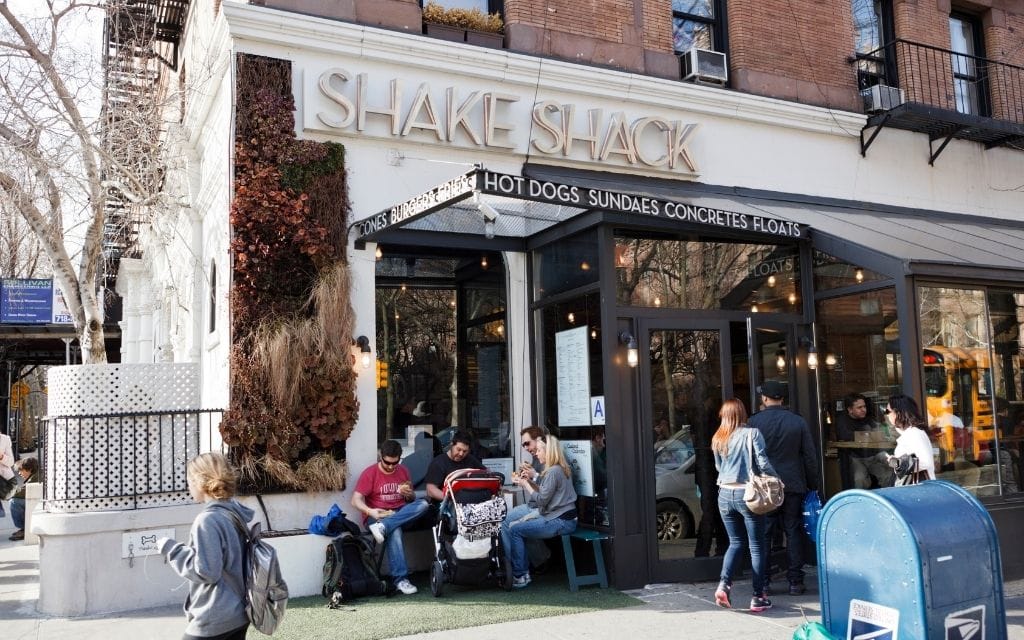
In general, Chinatown and Chelsea are great places to eat. If you’re spending time in the city’s High Line Park (from the former elevated railway), check out Chelsea Market in the old factory. A variety of shops and delicious food under one roof.
Chelsea Market is open Monday to Saturday 7am-2pm and Sunday 8am-10pm.
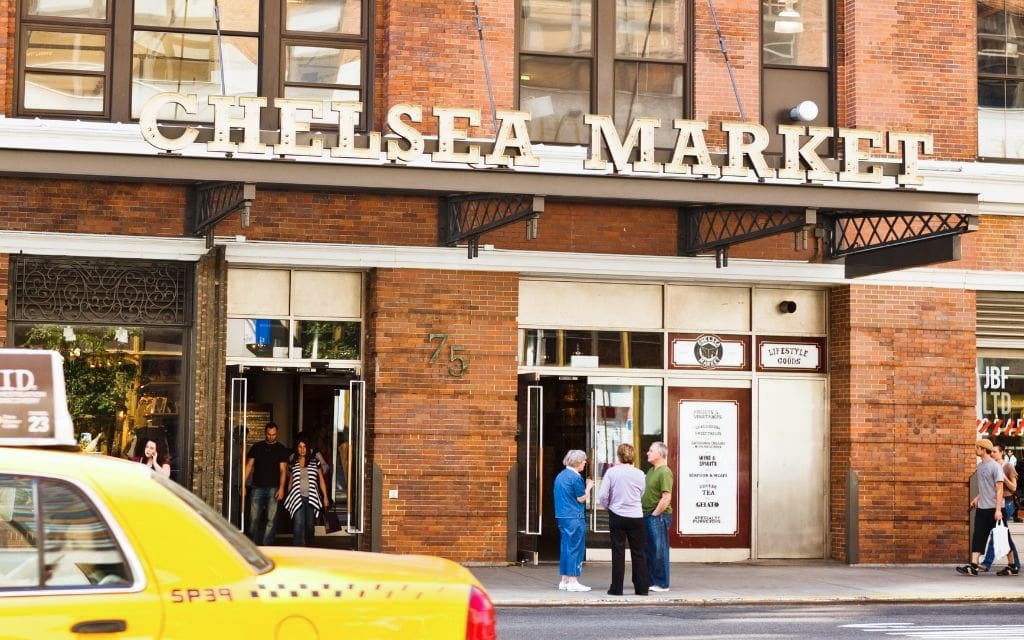
Looking for an interesting café or brunch place? Go to the West Village. The oldest part of New York City and one of the most famous areas where Carrie Bradshaw from Sex and the City and Friends lived.
Near the World Trade Center, Gansevoort Market is a self-service eatery serving food from around the world – Korean, Italian, Japanese and more. It’s a nice change after all that street food.
Not far from Wall Street and Battery Park (where the ferry to the Statue of Liberty leaves from) is the typical American restaurant Fraunces Tavern, where you can smell a lot of history.
There are many options for where to eat in New York. This is evidenced by the fact that 76 restaurants in the city have been awarded a Michelin star.
Food in New York
In downtown New York, the shops tend to be smaller. On the other hand, you can find them on almost every corner, because New Yorkers don’t usually drive.
Trader Joe’s has the best offer. They have several branches in Manhattan. I’d compare it to our Lidl. Good quality and prices (considering the prices in downtown NYC). But you’ll also find other chains such as Whole Foods Market and D’Agostino.
The locals also like to go to farmers’ markets. The most famous is in Union Square. You can come here on Mondays, Wednesdays, Fridays and Saturdays from 8:00-18:00.

Prices in New York
You’ll pay around $25 for a meal at a cheap restaurant and around $100 for a 3-course dinner for two. The prices of basic foodstuffs are as follows:
- Milk 1 l – $1,49
- White bread 500 g – $4,80
- Eggs 12 pcs – $5.25
- Cheese 1 kg – $16,45
- Chicken breast 1 kg – $15,02
- Bananas 1 kg – $2,12
- Water 1,5 l – $2,47
- Potatoes 1 kg – $3,98
Is New York safe?
Yes, some neighborhoods in New York are not safe. But you are not likely to move there. In general, New York is a safe city. This is especially true in Manhattan and the boroughs of Brooklyn and Queens. So much so that it is the safest city over 1 million people in America.
In Times Square, train stations and other high-traffic areas, protect your belongings against pickpockets, who abound here as they do in other major cities.
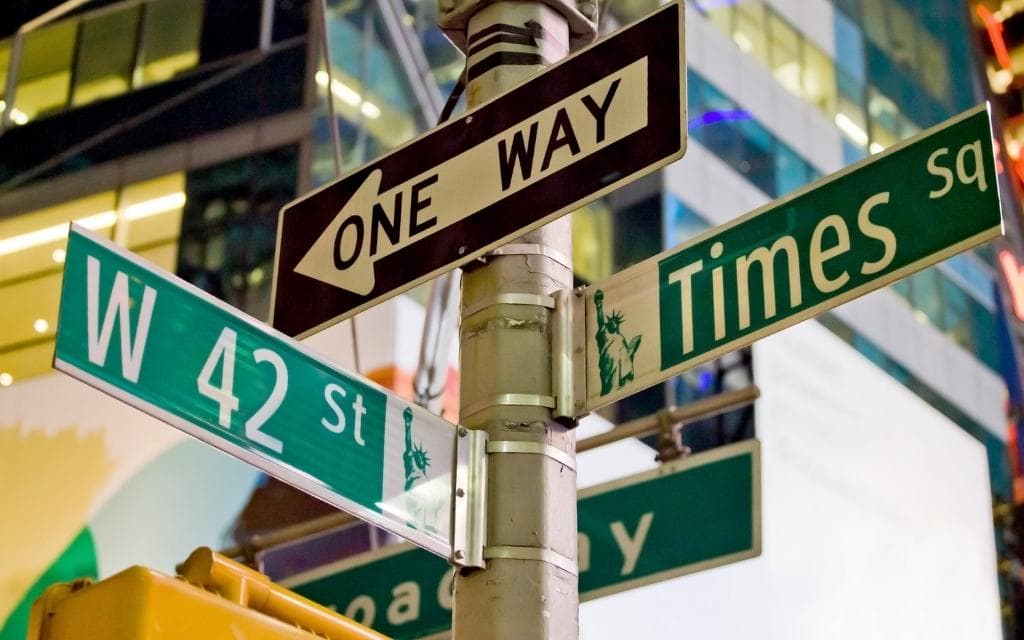
Useful tips before visiting New York
- Much of central Manhattan is laid out in a grid with clearly numbered cross streets. If the street numbers go up, you go north. If, on the other hand, they are falling, your path is heading south.
- The greatest concentration of famous sites is in Midtown, which is easily walkable.
- New York City has a smoking ban in many places. This applies to public buildings, bars, restaurants, shops, beaches, parks and pedestrian areas.
- Some bars and restaurants take cash only.
- New Yorkers walk fast and are busy, so they can sometimes bump into you pretty roughly if you don’t keep up with their pace. The same rules apply here as on the roads: if you are going slower, keep to the right.
- Be vigilant at the crosswalk. Drivers here are notorious for not obeying the rules and running red lights.
- Avoid empty trains or carriages.
If you have a question about our New York guide, ask in the comments below. Have a safe journey!
Learn more about New York
BEST PLACES IN NEW YORK: Get inspired by 30 things to do in New York City, including handy information on admission, hours and how to get around.
NEW YORK GUIDE: Here are tips on how to save in New York.
You can save a lot on entrance fees with tourist cards – check out our comparison and review.
